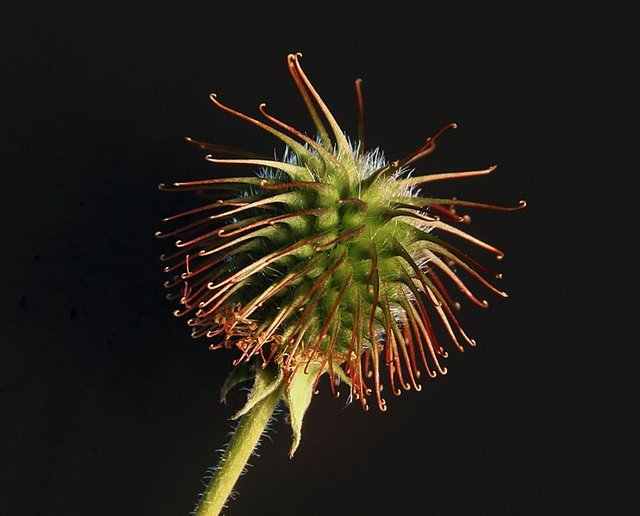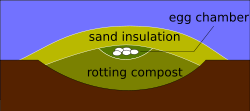BIONICS: The world became better.
Inventions by scientists have really made our lives better, easier and most importantly aided our efficiency. But in it all, have you been taken aback like myself about most inventions, as to how it all came to be. Was it just a random thought made real or a conscious study of things over time or were they made by "chance". Also, most inventions are they really new or just a modification of what has been.
The truth is some inventions came by chance as in the case of penicillin. some by conscious effort as seen in Thomas Edison's bulb which he worked on over and over again until it became useable. Bionics has and can still aid many discoveries if properly harnessed.
What is bionics?
Bionics is the use of biological methods and systems existing in nature to the study and design of systems and technology that brings engineering and technological advancements. In simple terms, bionics is invention copied from living things.
Although, some inventions which performs the same function as what these animals/plant have been doing weren't as a result of studying the animals or the plants. This is just to create an awareness of what the animals/plants have been doing effortlessly for years that a human replicate of the same brings so much awe and wonder to us.

Bur that clung to the Swiss engineer's dog that gave him velcro idea: Wikipedia common
One biologist said, " I have the suspicion that we are not the innovators we think we are; we're merely the repeaters." Many times, human inventions only repeat what plants and animals have been doing for ages and this will be revealed by this article.
Few examples below will make this clearer. It will be presented under two subheads.
Animals did it first
- Underwater breathing
water beetles are able to breathe underwater with gills. With the aid of the surface tension of water, the beetles are able to keep air bubbles which keeps the beetle alive. some aquatic beetles can spend their entire lives underwater with the aid of this tank. This technique is similar to that used by scuba divers to stay alive underwater but you see, man actually came late in this aspect.
- Incubator
The malle birds made incubators before humans got a hint of it. This is how they made it, the male carries out the site selection, usually an open space between the stunted trees of the mallee,he makes a hole of about 3m across and 1m deep in the sandy soil with his feet. Afterwards, he begins to collect organic material (sticks, leaves, and bark) to fill it. He makes windrows for up to 50 m around the hole. The entire nest rises to about 0.6 m above ground level. He turns and mixes the material to encourage decay after a rainfall, and if conditions allow, digs an egg chamber. The female assists with the excavation of the egg chamber but the timing varies with temperature and rainfall.

Creative Commons Attribution-Share Alike 2.5 GenericWikipedia common
The female lays her eggs starting from September to February, provided enough rain has fallen to aid organic decay of the material. The male continues to maintain the nest by regulating the temperature, adding more soil to the mix as required. Incubation time depends on temperature and rainfall.
The man-made incubators work just as this, the major requirements are temperature and humidity but the mallee birds came first. - Echolocation
Echolocation also called sonar is used by several kinds of animals (bats, dolphins, whales,oilbirds etc). The animals emit calls or signals to the environment and listen to the echoes from those calls that comes from various objects near them. The echoes help them to locate and identify the objects around them. It is used for navigation and hunting in any habitat the animal finds itself.
- Desalination
Gulls and some other birds have nasal or salt glands that help regulate the salt balance in their blood. A little salt is processed by the kidneys, the excess runs through the glands found in the grooves of their skull and it then flows out through their nostrils. Other animals like sea turtles, crocodiles and sharks can carryout desalination too. Plants like Salicornia and mangrove has learned to use salt water efficiently.
While we build huge factories with large equipments, animals have been doing this over and over again before man ever thought of it.
Inventions made through the study of animals
- Lotus effect
The leaves of lotus plant is highly water-repellent (i.e. they exhibit ultrahydrophobicity). Lotus ultrahydrophobicity allows water droplets to come together very quickly forming a spherical shape which then roll off of the leaf very easily at the slightest disturbance of the leaf.
Barthlott and Ehler in 1977, studied and described such self-cleaning and ultrahydrophobic properties for the first time and named it "lotus effect".
Coatings, paints, roof tiles, fabrics and other surfaces that can stay dry and clean themselves have been developed by replicating the self cleaning ability of plants, like that of the lotus plant. In 2005, it was proved that clothes treated with NanoSphere technology allowed tomato sauce, coffee and red wine to be easily cleaned. - Velcro Velcro was made by a Swiss engineer George de Mestral when he was cleaning his dog of burrs picked up on a walk then he realized how the hooks of the burrs clung to the fur. Voila! That's how velcro was born.
- Lumberjack
The blades of lumberjack which had a horn shaped saw-tooth design was made by observing the wood burrowing beetle. This aided tree felling business in the 19th century.
- Cat's eye reflector
Percy Shaw in 1935 studied the mechanism of cat eyes which was found to have a system of reflecting cells known as tapetum lucidum. This was capable of reflecting the tiniest bit of light and a Cat's eye reflector was made.
- RFID ( Radio Frequency Identification) tag and nanosensors
The blue morpho butterfly wing structure was studied to understand the way it reflects light. This was later mimicked to create an RFID tag which reads through water and on metal. Also, the wing structure of butterflies inspired the creation of nanosensors to detect explosives.
- Medical Adhesive
Glue and tiny nano-hairs are developed based on the physical structures found in the feet of geckos. Also, Adhesive which allows mussels to stick to rocks, piers and boat hulls were studied and it brought about the invention of bio-adhesive gel for blood vessels.
- Housing
In Harare, the cooling system of the Eastgate Centre was modeled after a termite mound in order to achieve efficient passive cooling.
So you see dear friends humans are highly creative but animals have proven that they are equally creative. The beautiful thing is, animals can't learn from man, can't study man and adopt his ways but man can do this and many more from animals. We will definitely create more things and make our better when we look at animals beyond being a pet, source of food or security and study them thoroughly. Of a truth! Bionics is the word that has and is making the world better.
Reference
https://en.m.wikipedia.org/wiki/Lotus_effect
https://en.m.wikipedia.org/wiki/Animal_echolocation
http://www.bbc.com/future/story/20140714-how-long-can-you-go-without-air
https://en.m.wikipedia.org/wiki/Bionics
https://inhabitat.com/the-biomimicry-manual-how-does-nature-make-saltwater-drinkable/